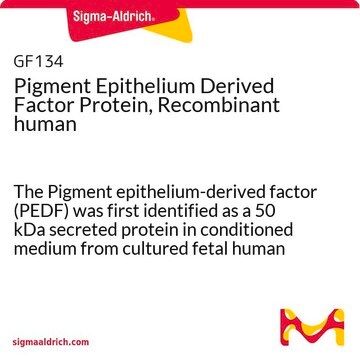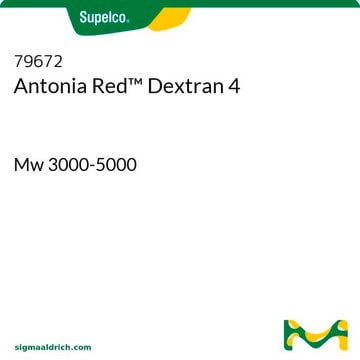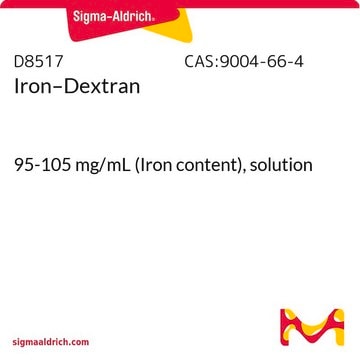SRP4988
PEDF human
recombinant, expressed in E. coli, ≥95% (SDS-PAGE), ≥95% (HPLC)
Synonym(s):
EPC-1, EPC1, PIG35, Pigment epithelium-derived factor, Serpin-F1, SerpinF1
About This Item
Recommended Products
biological source
human
recombinant
expressed in E. coli
Assay
≥95% (HPLC)
≥95% (SDS-PAGE)
form
lyophilized
mol wt
~44.5 kDa
packaging
pkg of 20 μg
technique(s)
cell culture | hybridoma: suitable
western blot: suitable
impurities
endotoxin, tested
suitability
suitable for Western blot
NCBI accession no.
shipped in
wet ice
storage temp.
−20°C
Gene Information
human ... PEDF(5176)
General description
Pigment epithelium-derived factor (PEDF) is a multifunctional glycoprotein that belongs to the serine proteinase inhibitor (serpin) family. This protein is widely expressed across various tissues and organs in mammals and is characterized by a reactive center loop (RCL), a common structural feature of serpins. PEDF plays a crucial role in maintaining numerous physiological functions. SERPINF1 mRNA, which encodes PEDF, exhibits high expression levels in both human fetal and adult livers, as well as in adult human bone marrow.
Application
Biochem/physiol Actions
Physical form
Reconstitution
Storage Class Code
11 - Combustible Solids
WGK
WGK 3
Flash Point(F)
Not applicable
Flash Point(C)
Not applicable
Certificates of Analysis (COA)
Search for Certificates of Analysis (COA) by entering the products Lot/Batch Number. Lot and Batch Numbers can be found on a product’s label following the words ‘Lot’ or ‘Batch’.
Already Own This Product?
Find documentation for the products that you have recently purchased in the Document Library.
Our team of scientists has experience in all areas of research including Life Science, Material Science, Chemical Synthesis, Chromatography, Analytical and many others.
Contact Technical Service








